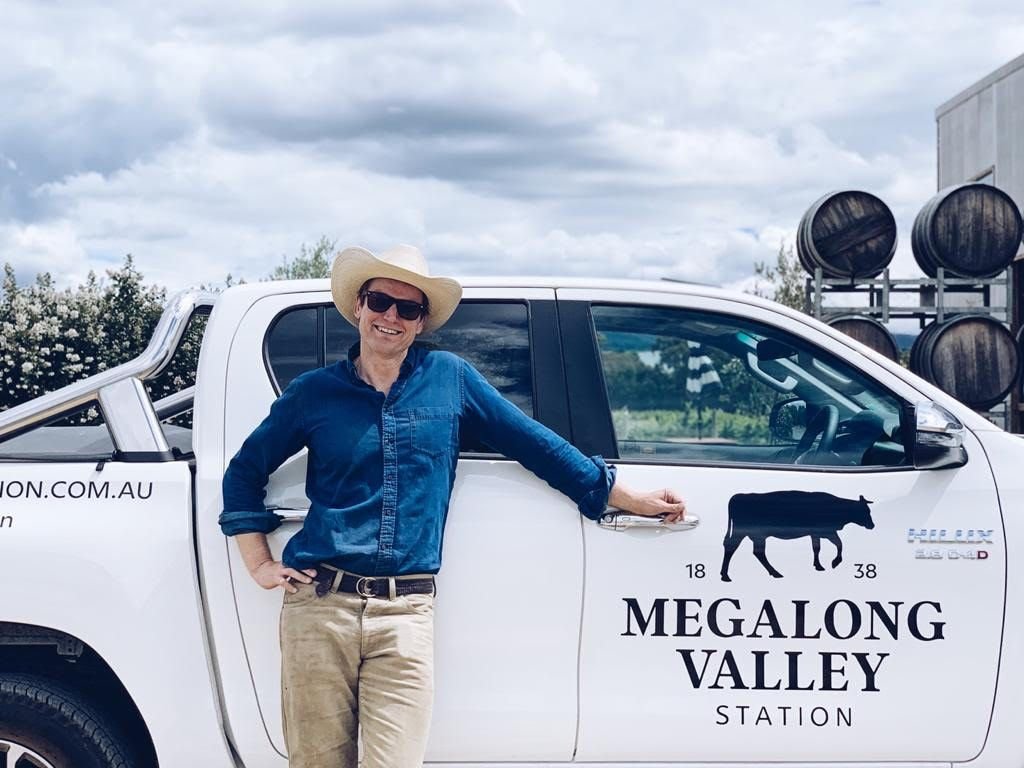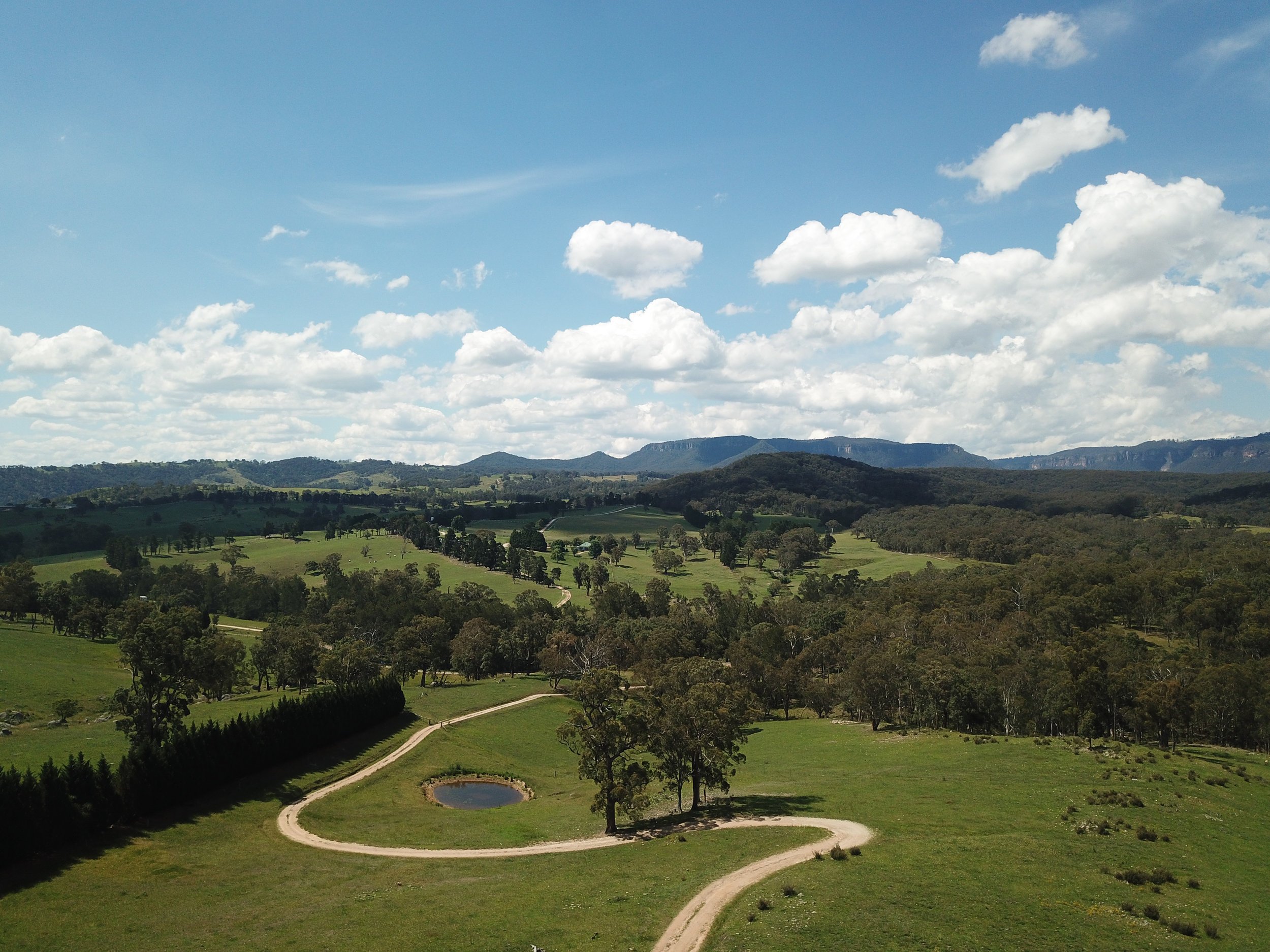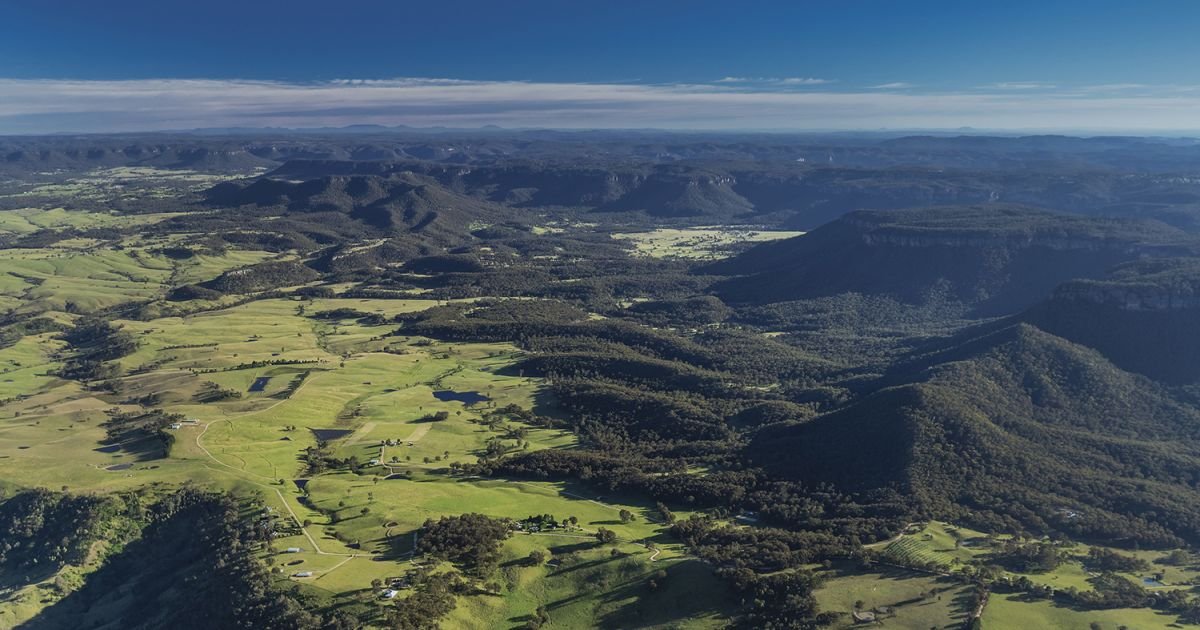Glen Wellham - - Founder
Glen is the owner of Megalong Valley Station and has been farming for over 10 years. The property borders his family's farm that has been in the valley for over 40 years.
With a genuine passion for Megalong Valley, Glen takes pride in being the custodian to the land and sharing the farm experience with others.
A little bit about us...
Megalong Valley Station has been a working cattle farm for 10 years. The farm is home to over 150 cattle including Herefords, Angus Cross, shaggy Highland Kyloes and ‘Napoleon’ and ‘Wellington’ the resident Bulls.
OUR VISION
Share an authentic farm experience with people from all walks of life. Inviting guests to eat the local produce, stay at the farm and explore the local area.
Cattle and class in the Blue Mountains
Have a highland fling at this tranquil rural retreat away from
the day tripper throngs. By PENNY HUNTER
Published on The Australian From Travel November 5, 2021
HISTORY OF THE LAND
The name Megalong Valley is derived from a Gundungurra Aboriginal word thought to mean 'Valley Under The Rock'. The area had been occupied by the Gundungurra Aboriginal people for an estimated 40,000 years before Europeans arrived.
The Megalong Valley farming area used for beef production since the first white settlers arrived in in 1830s. The first survey of land within the Megalong area was in 1838 of 640 acres to George Aspinall and is claimed to be known as ‘Megalong Station’. In 1870 Campbell Mitchell found traces of oil bearing shale (for kerosene) in the valley and this lead, by the 1880s, to twenty eight mining leases being applied for in Megalong. By 1892 there were 160 miners and 30 farmers living in the valley. Since that explosion in the population, Megalong has remained relatively quiet. At the 2006 census, Megalong had a population of 164 people although it still maintains two churches and a school.
SIX FOOT TRACK
In 1884 work started on finding a horse track from Katoomba to Jenolan Caves. This work was successfully completed and Parliament granted 2,500 pounds for making a six foot wide track, which was completed and became known as the ‘six foot track’ over approximately 45km. In the ealy 1900s new roads provided faster access to the Jenolan Caves and by the 1930s a lack of maintenance had resulted in the track no longer being suitable for bridle use. The track was reopened in 1984 after extensive reconstruction work and much of the track is through the Blue Mountains World Heritage listed national park. There is also an annual six foot track marathon in March every year for the seriously fit. The track also goes through Megalong Valley Station.
REDLEDGE PASS
Redledge Pass was an old miners route to the Glen Shale Mine on the side of Narrow Neck. It was used by local aborigines before this as it is one of the few natural passes on or off Narrow Neck that doesn’t involve exposed scrambling. Redledge Cottage is named after this route as it is directly below this pass.






